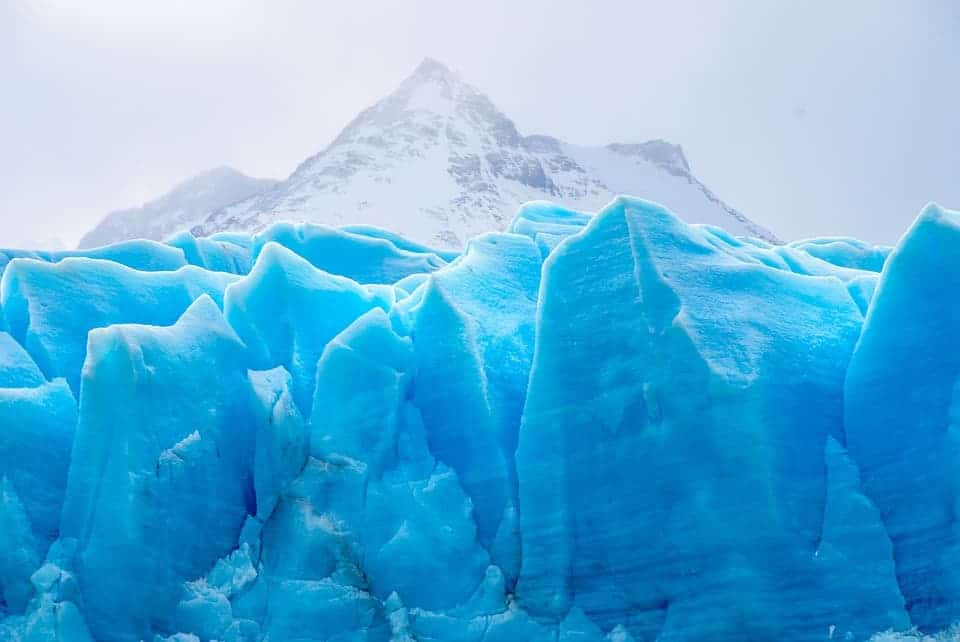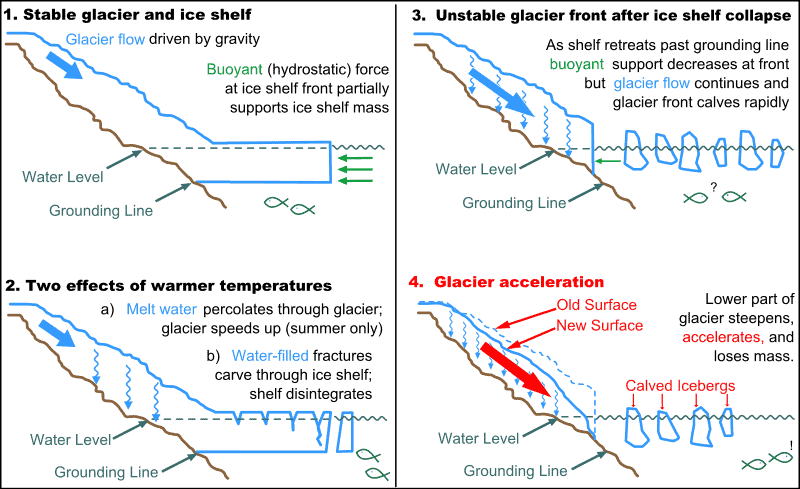We’re seriously underestimating Antarctica’s ability to push global sea level rise, a new study reports.

Ice masses in the southern continent are becoming extremely unstable due to climate change, the authors explain, but this isn’t readily apparent. The team behind the study, with members from the Georgia Institute of Technology, NASA Jet Propulsion Laboratory, and the University of Washington, says that this hidden instability will likely accelerate water flow into the ocean and raise sea levels much faster than previously estimated.
Thawing the Antarctic
Five Antarctic glaciers have doubled their rate of ice loss over the last six years, according to the study, with at least one (the Thwaites Glacier) being in danger of collapse. While we can’t accurately estimate exactly how glacier runoff will evolve over the coming 50 to 800 years yet (this is dependant bot on our choices and on unknown factors such as topography), the team have done their best to cover all possible outcomes. For this, they’ve run 500 ice flow simulations for Thwaites’ evolution. While there was a wide range of variation between the scenarios, they all ended in the eventual collapse of Thwaites.
Glacier collapse has a lot to do with the geometry of the bedrock underpinning the ice. Glaciers whose leading edge ‘hangs’ in the ocean instead of being supported by bedrock are called tidewater glaciers. The point at which they glaciers start to float is the grounding line. Glacier instability/collapse first starts here.

Warmer temperatures also heat up the ocean water, which starts eating away at the bottom of the glacier (which raises sea levels). This process also accelerates the rate at which glaciers fragment and float out into the sea. This is perhaps the most worrying process from a sea-level perspective: these bits of ice eventually melt in the wider ocean, but the process also speeds up the rate at which glaciers slide into the waters (as they’re no longer buoyed up by the ocean), leading to more and more melting.
“Once ice is past the grounding line and just over water, it’s contributing to sea level because buoyancy is holding it up more than it was,” says Alex Robel, an assistant professor in Georgia Tech’s School of Earth and Atmospheric Sciences and the study’s lead author. “Ice flows out into the floating ice shelf and melts or breaks off as icebergs.”
The simulations show that even if we do stop climate warming in the future, instability in Thwaites will keep feeding water into the global ocean at extremely fast rates compared to the baseline value. These results are based on present-day ice melt rates, meaning that higher rates of global warming will lead to faster and stronger melt rates than identified in this paper.
Worst of all, if Thwaites does collapse, it will trigger a feedback loop leading to more and more melt as it slides into the ocean at faster rates.
“If you trigger this instability, you don’t need to continue to force the ice sheet by cranking up temperatures. It will keep going by itself, and that’s the worry,” said Robel. “Climate variations will still be important after that tipping point because they will determine how fast the ice will move.”
“After reaching the tipping point, Thwaites Glacier could lose all of its ice in a period of 150 years. That would make for a sea level rise of about half a meter (1.64 feet),” adds NASA JPL scientist Helene Seroussi, a co-author of the paper. “The process becomes self-perpetuating”.
Currently, sea levels are 20 cm (almost 8 inches) above pre-industrial levels. Sea ice doesn’t raise sea levels as it melts — all that ice is already in the water so it already contributes a volume to the global ocean — but land-borne glaciers do. Antarctica holds the most land-supported ice, so it can have a very sizeable contribution to sea levels.
“There’s almost eight times as much ice in the Antarctic ice sheet as there is in the Greenland ice sheet and 50 times as much as in all the mountain glaciers in the world,” Robel explains.
It’s not yet clear whether Thwaites has reached the tipping point or not, but its outer edge is sinking into the ocean faster than previously recorded. The findings are particularly worrying as the success of current efforts to proof cities and installations against sea level rise are wholly dependent on having accurate predictions. However, the current study shows that our current forecasts aren’t very reliable.
“You want to engineer critical infrastructure to be resistant against the upper bound of potential sea level scenarios a hundred years from now,” Robel said. “It can mean building your water treatment plants and nuclear reactors for the absolute worst-case scenario, which could be two or three feet of sea level rise from Thwaites Glacier alone, so it’s a huge difference.”
Another surprising finding made by the team is that when climate conditions fluctuate strongly, Antarctic ice evens out the effects. Ice flow in such conditions will increase gradually, not wildly, but the instability produced the opposite effect in the simulations.
“The system didn’t damp out the fluctuations, it actually amplified them. It increased the chances of rapid ice loss,” Robel said.
“[Almost total ice loss in Thwaites] could happen in the next 200 to 600 years. It depends on the bedrock topography under the ice, and we don’t know it in great detail yet,” Seroussi said.
The paper “Marine ice sheet instability amplifies and skews uncertainty in projections of future sea-level rise” has been published in the journal Proceedings of the National Academy of Sciences.






